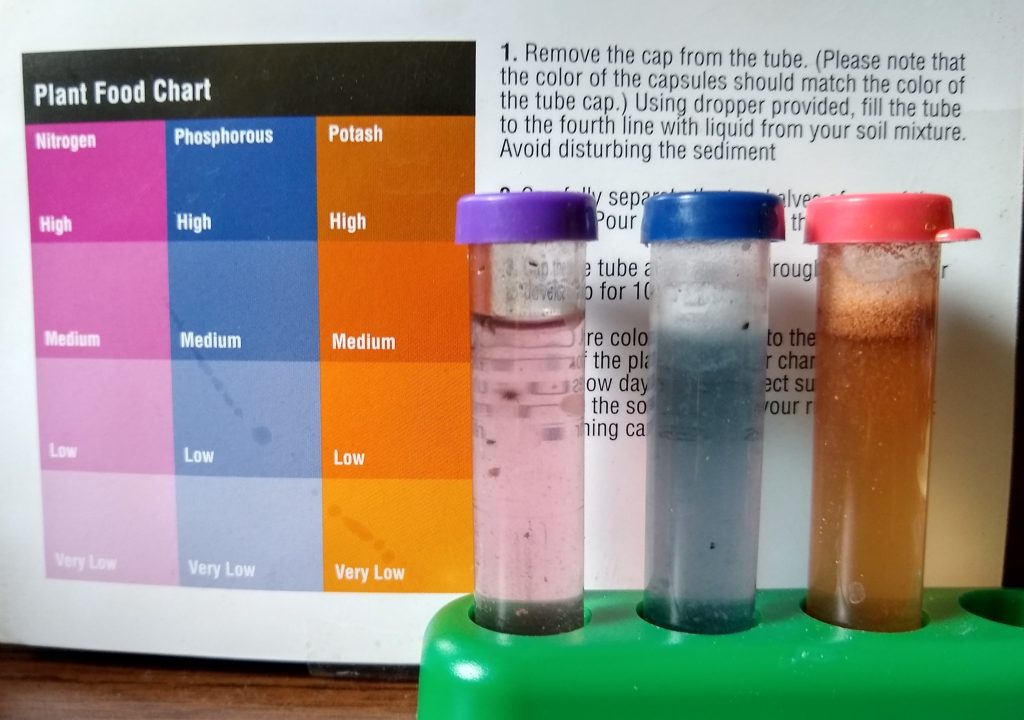Why nutrients are important
With a soil test kit, I tested for pH and also nutrients in the soil. Plants need three main things to grow: light; air; and nutrients (food).
The test kit helps test for three major nutrients: Nitrogen (N); Phosphorous (P); and Potassium (K) (Potash). Different plants require each nutrient to a different degree for optimal growth.
Testing method and conclusions
I filled one-fifth of a clean jar with a soil sample. Then, added clean water to the brim, put the lid on, shook it, and let it settle. A fine clay soil will take much longer to settle than a coarse sandy soil. It took about 30 minutes to settle (another indication that the garden has sandy soil).
I used a dropper to pull liquid from the soil mixture, put in respective chemicals, shook each tube, and waited for each to turn a color. I compared that color with color gradients in a chart. I concluded the following:
- Nitrogen: Between Low and Very Low: 35%
- Phosphorous: Very Low: 25%
- Potash: Low: 50%

Use: match nutrient level with supplemental food (fertilizer)
The soil test kit provides recommendations for supplemental food (fertilizer) in a table. The rows of the recommendation chart are for the type of plant (lawn, fruit, flower, etc.) while the columns are for Very Low, Low, Medium, or High amounts of each nutrient.
There are different tables for feeding prior to planting and feeding established plants and beds. The table for established plants indicates that a fertilizer (food) with 8-6-8 mix of Nitrogen, Phosphorous, and Potash works for the plants in the soil area tested. The numerals indicate ounces (weight) /100 sq. feet.
This triad numeral is usually in bold on the back of any fertilizer (food) you purchase. With this information, I can purchase an appropriate fertilizer for the soil area tested. But how to apply this fertilizer is another topic!